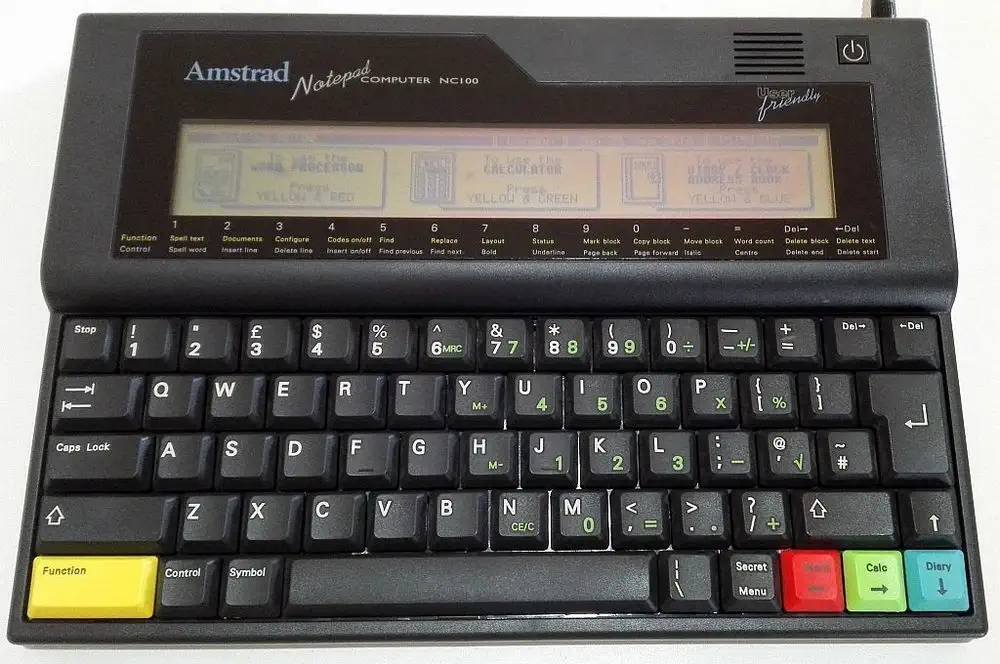Amstrad NC100 Notepad
The Amstrad NC100 Notepad was a portable computer released by Amstrad with as main purpose word processing. It had a diary, an address book, a time manager, a calculator and a version of BBC Basic built in. The screen was an 8 line, 80 character LCD type, and it had no backlighting. The battery life of the computer was around 20 hours on four standard AA batteries.
The NC100 was a Z80 based computer, running at 4MHz. It came with 64KByte RAM, and 256KByte ROM. Besides it's main purpose as a word processor, the NC100 was equiped with a BASIC interpreter that was fully compatible with BBC Basic. The NC100 could also be programmed in Assembly. However the Assembler built into BBC Basic was meant for the 6502 processor, and it's use will almost always crash the NC100, since it runs on a Z80.
Some BASIC limitations apply, the screen of course is only 480x128 pixels, and monochrome. Sound capabilities also lack in comparison to a full home computer.
The computer had several ports for connecting peripherals:
- RS232 Serial port
- Centronics Parallel port
- PC Card Socket
The main application for the NC100 was the Protext word processor. It is rumored that Amstrad's chairmain Alan Sugar wrote the first chapter of the user manual for the NC100 on the device to show off it's capabilities.
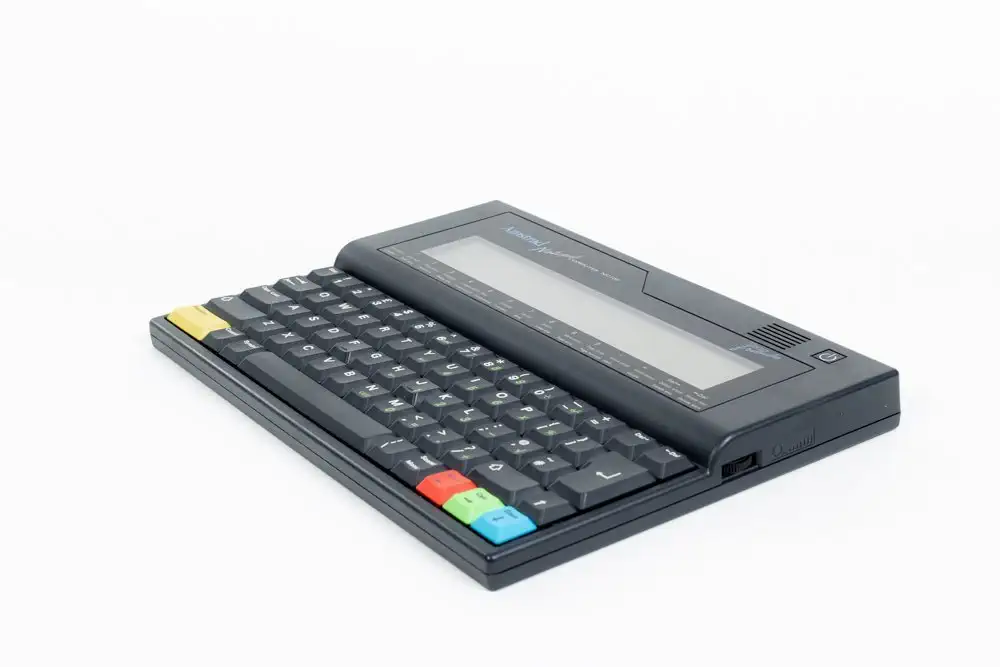
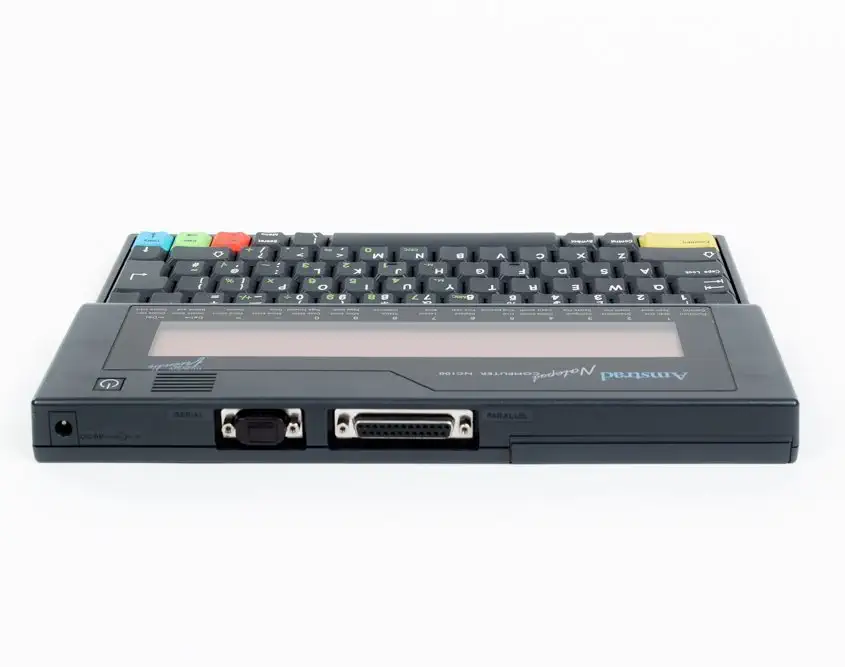


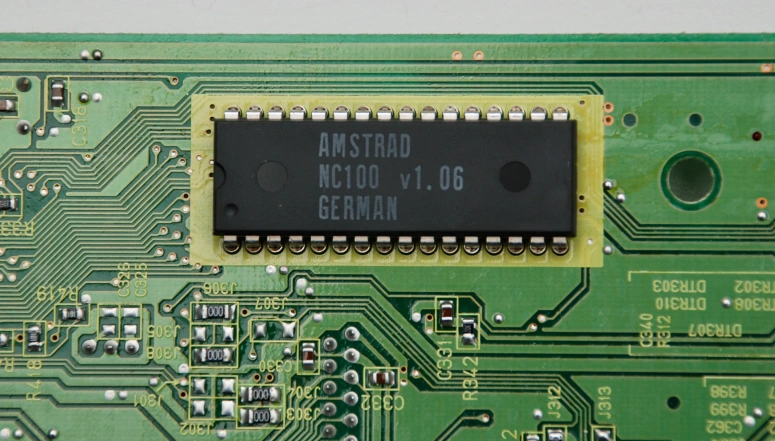
CPU View - Zilog Z80 Family
The Z80 quickly became popular in the personal computer market, with many early personal computers, such as the TRS-80 and Sinclair ZX80, using the Z80 as their central processing unit (CPU). It was also widely used in home computers, such as the MSX range, SORD, and the Amstrad CPC, as well as in many arcade games. Additionally, it was also used in other applications such as industrial control systems, and embedded systems. The Z80 was widely used until the mid-1980s, when it was gradually replaced by newer microprocessors such as the Intel 80286 and the Motorola 68000.
The Z80 microprocessor was developed by Zilog, a company founded by Federico Faggin in 1974. The Z80 was released in July 1976, as a successor to the Intel 8080. It was designed to be fully compatible with the 8080, but also included new features such as an improved instruction set, more powerful interrupts, and a more sophisticated memory management system.
The Z80 quickly became popular in the personal computer
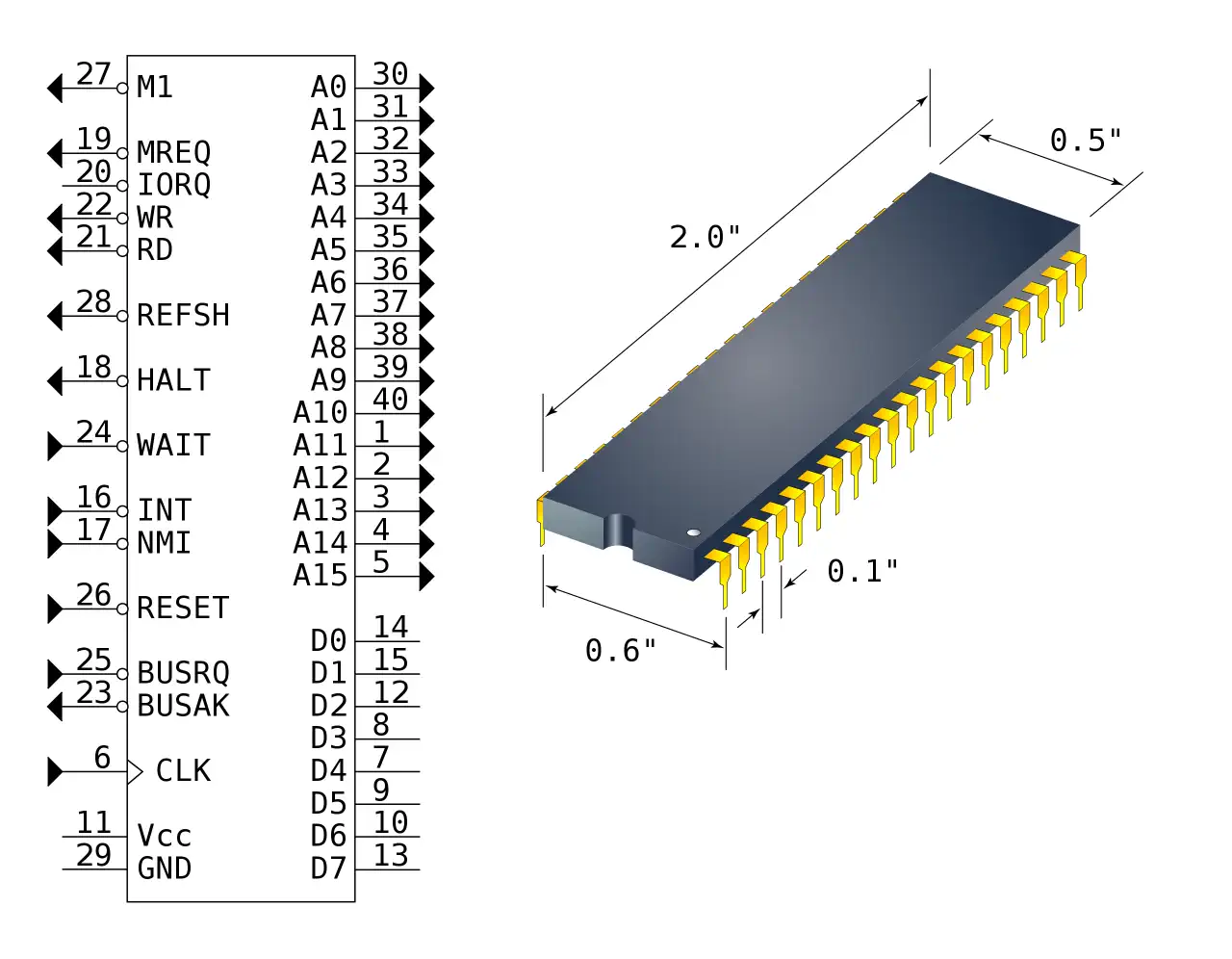
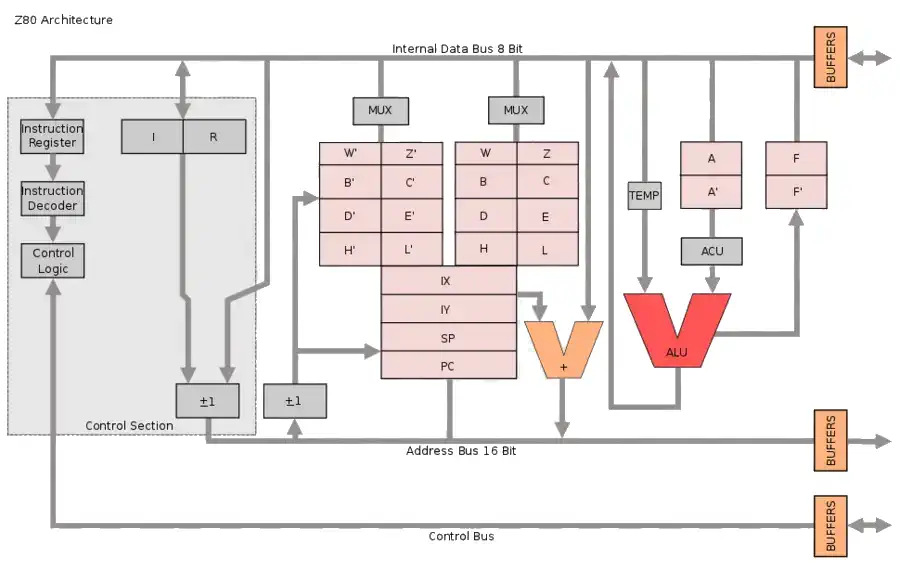
480x64 mono graphics Best Text 80x8 Best Color monochrome Graphics 480x64 monochrome Sprites n/a System OS Internal Software Storage PC Card
